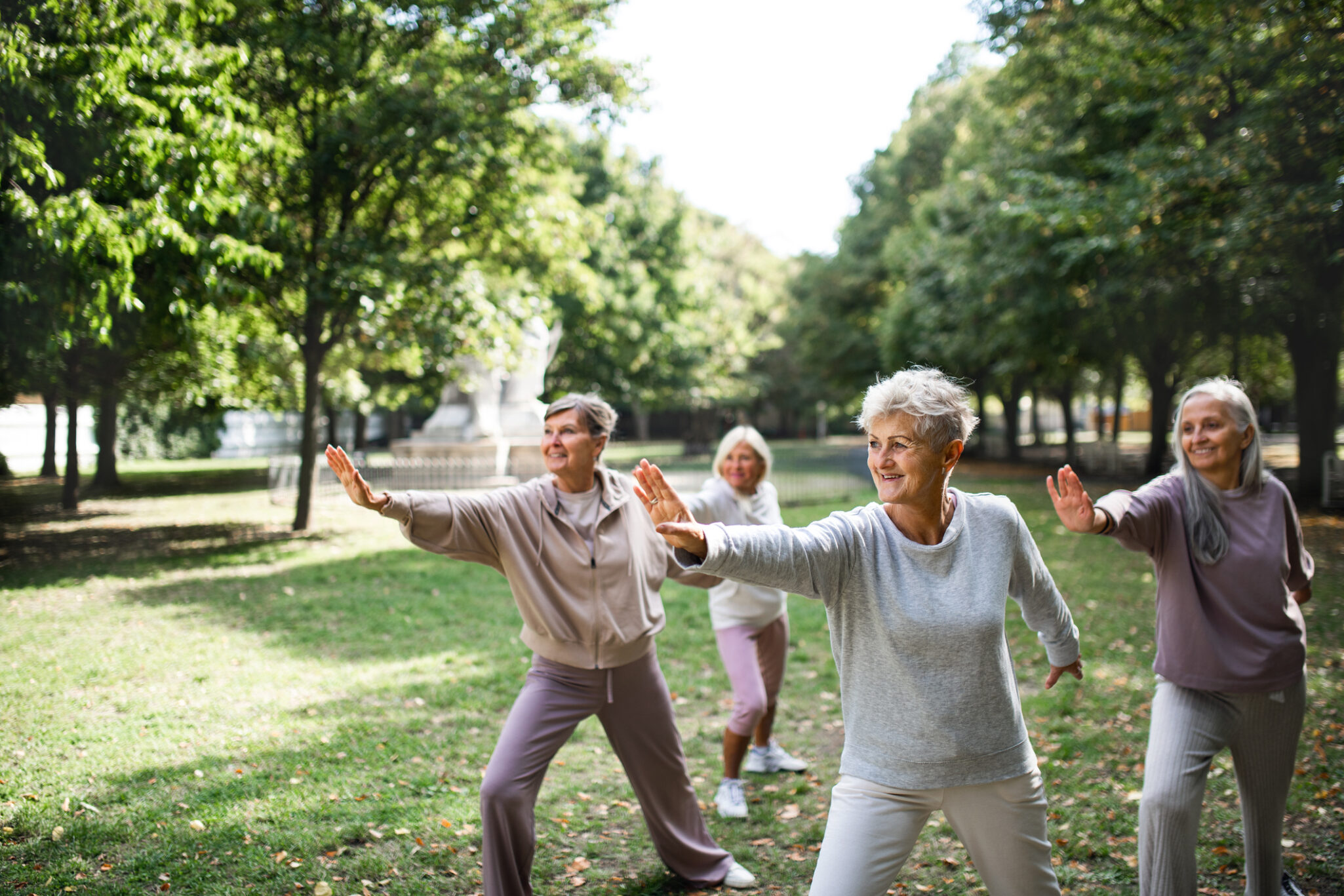
Careers Form
Focusing on Balance Helps You Maintain Independence As You Age
Balance training is an important skill at any age, and it becomes even more important as we get older. While it’s impossible to prevent every fall, having good balance can increase your chances of staying on your feet in precarious situations. Being able to maintain your footing if you trip or slip on uneven or slippery surfaces can help you stay upright and avoid the dangers of a fall.
Preventing falls is a key part of being able to live the independent lifestyle you want in retirement. One fall can lead to a cascade of setbacks, including hospital stays, lengthy recovery times, rehabilitation stays, problems with mobility and other limitations. Working on improving your balance can actually reduce the risk of falling and help you maintain independence as you age.
Why Do Seniors Fall?
It comes as no surprise that fall injuries are a leading cause of disability in older adults. Each year, more than 1 in 4 adults age 65 and older have a fall, and about 3 million older adults are treated in emergency rooms for fall injuries, according to the Centers for Disease Control and Prevention.
Balance is a complex motor function that involves the brain, vision, nervous system, muscles and bones. As we age, the sensory information from these vital systems tends to break down, and the chance of losing your balance and falling increases. It’s important to talk to your doctor about any health issues that could increase your risk for a fall and how to address those risks in your daily life.
Any combination of these factors may contribute to a higher risk of falling in older adults:
- Problems with balance may be caused by vision changes or inner ear issues affecting the vestibular system.
- Weakness in the hips and legs, weak muscles, spinal degeneration and other physical challenges may lead to an unsteady gait and increased risk of falls.
- Individuals taking multiple medications may have a higher risk of falls, and certain medications may affect balance and contribute to feeling dizzy or lightheaded.
- Home hazards such as dim lighting, exposed cords, loose rugs and other tripping hazards pose a safety risk for falling.
- Having positional low blood pressure (i.e., when blood pressure drops upon standing) can contribute to balance problems and fall risk.
- Feet and footwear issues may also play a role, especially for people with diabetes who may have altered sensation in their feet.
Helping You Find Your Balance
The good news is engaging in physical activity that promotes better strength, coordination, balance and flexibility can help you stay fit and reduce the risk of falling. And when you live in a community with a robust wellness program and fitness center on campus, it’s easier than ever to stay on top of your health.
At The Glebe, you’ll have a full lineup of fitness activities to choose from, including group exercise classes like Beginning Exercise, Yoga, Tai Chi, and Gait and Balance. Joining an exercise class is a great way to build strength, improve your balance and have fun while doing it!
Best Balance Exercises for Seniors
Here are some of our favorite balance exercises that you can do any time of day, right from the comfort of your living room:
- Sit-to-stand: Sit on a chair with your hips scooted to the edge of the chair. Keep your toes lined up under your knees and stand up. You can use your arms to push up off the chair. To sit down, bend a little at your knees first and gradually lower your body to the seat. Pause and repeat 10 times.
- Heel-to-toe walk: Put your left foot in front of the right so they touch heel to toe. Put weight first to the heel of the front foot, then to the toes. Repeat with your right foot and so on while moving forward. Try to take 20 steps in this fashion.
- Standing marches: Hold on to a counter or sturdy chair with one hand, stand up straight and lift one knee up until your thigh is parallel to the floor (or as close to parallel as possible). Alternate legs, lifting and lowering each leg as you count to 20.
- Flamingo stand: For this exercise, hold on to a chair to help maintain balance, if needed. Shift your weight onto your right leg. Lift your left foot and extend your leg forward. Hold the position for 10-15 seconds and then return to standing. Repeat 3 times, then try the opposite side.
Discover a Wellness-Centered Lifestyle at The Glebe
As a resident of The Glebe, you’ll find a renewed focus on healthy living, including a host of wellness programs and activities to keep you on your toes! You don’t have to wait until you need care to enjoy The Glebe — now’s the time to take advantage of all the perks of living in our community while you’re still active and healthy. Explore our independent living options and fun ways to stay fit and find balance in your life.

